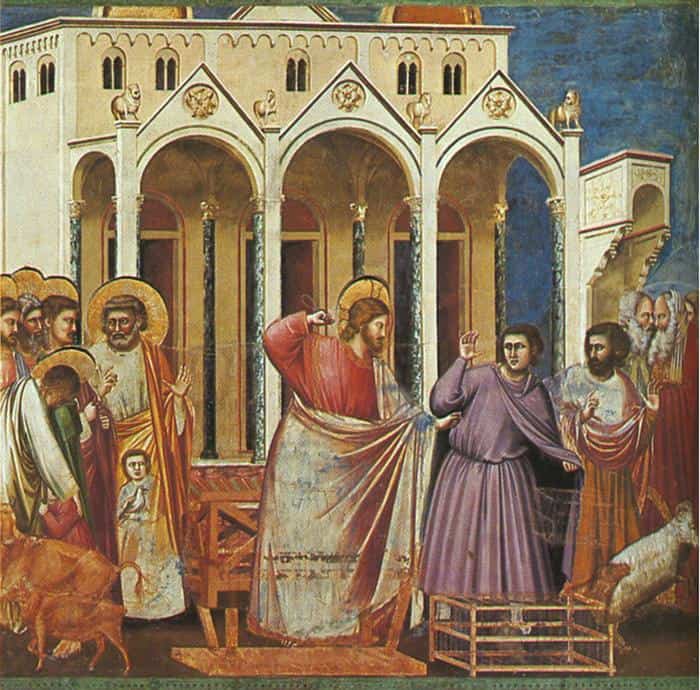The intercontinental duo is at it again! Two of Pope Francis’s close confidants, Italian Jesuit Fr. Antonio Spadaro and Argentinian Presbyterian Rev. Marcelo Figueroa, have teamed up once more to investigate an aspect of American culture and highlight how the phenomenon relates to the teachings of Pope Francis. About this same time last year they published an article that gained a lot of attention, partly due to its poignant criticism of a curious phenomenon they called “Catholic Integralism”, and partly due to the article’s conflictual and divisive mode of argumentation and the its opaqueness and general lack of clarity.
This year’s article is quite different. Although the confounding specter of “Catholic Integralism” raises its head again (the authors still fail to define the term, but toss a lifeline to the reader that, when grasped and reeled in, ends up being a mere self-reference to last year’s article) this year the duo discusses a “well-known theological current”, and their mode of analysis avoids the conflictual and divisive dimensions of last year’s article—which is good news for the article’s intelligibility, but potentially bad news for its media reach and click-stats.
Figueroa and Spadaro first provide a brief analysis of the “prosperity gospel” movement, making use of the abundant scholarship that has been dedicated to this rising phenomenon. I used to be an evangelical Protestant, so the well-defined nature of this phenomenon along with the volume of analysis that it has enjoyed render their succinct presentation effective: this time there is little doubt of what American-born movement they are discussing.
While reading the article, however, the thing that surprised me most was that Spadaro and Figueroa don’t explore why the prosperity gospel is enjoying “exponential growth,” even though the article itself contains pertinent aspects of the answer to the unasked question.
From my deep personal experience of the prosperity gospel, I propose that there are four main contributors to the prosperity gospel’s success. The first two are more practical in nature, not discussed by Spadaro/Figueroa, and things from which the Catholic Church can cautiously take some pointers. The second two contributors are theological in nature, more dangerous to the Gospel, and touched upon in some way in the Spadaro/Figueroa article.
The first practical contributor to the appeal of the prosperity gospel is that it seems to succeed in bringing about greater health and wealth. This success is partly false and due to the natural selection of testimonies (i.e. people are reticent to share their stories of sickness or economic failure). However, there is real success that flows from the practical approach employed in these congregations, most of which hold classes on debt retirement, credit card use, and financial management. These practical courses, reinforced with preaching, assist people in changing their financial habits and breaking oppressive cycles of debt. When was the last time you saw a notice in a Catholic parish for a class in which attendees cut up their credit cards and learned how to make and follow a domestic budget? As for increasing physical health, the mega churches also often have gyms, recreation centers, and classes on health and fitness. Although some Catholic parishes attached to schools have such facilities, the communal use of such facilities is hardly representative of contemporary parish life. This leads to the second contributor to the attractive power of these congregations.
If you ask prosperity gospel folks what they like about their church most will provide you with the second practical contributor: the welcoming community. These communities often have outreach and welcome down to a science. A common problem reported in Catholic parishes is the lack of a deep sense of belonging and community. Although there have been places and times in which the parish was the center of a vibrant community of faith, parishes are now often treated as dispensers of sacraments—a place to meet on Sunday to fulfill one’s obligation. This is not to suggest that we need to adopt any worship practices, the last thing we need is to make Catholic worship less mystical and transcendent, but absent the integration into the full mystery of the living Body of Christ the sacraments can also transform God into “a power at our service” and they run the risk of becoming as magical as the mega church’s incantations—a way to extract grace from God’s promises for our own purposes.
*****
This brings us to the consideration of the final two contributors to the exponential growth of the prosperity gospel, which are connected and theological in nature.
The first theological contributor to the rise of the prosperity gospel is the kind of anthropocentric or egotistical exegesis that arises when Scripture is individually interpreted, outside of a matrix of doctrinal support. It piqued my curiosity when the article identified an application of “faith alone” as a problem for the prosperity folks. The authors state, “In truth, one of the serious problems that the prosperity gospel brings is its perverse effect on the poor. In fact, it not only exasperates individualism and knocks down the sense of solidarity, but it pushes people to adopt a miracle-centered outlook, because faith alone, not social or political commitment—can procure prosperity.” It is surprising for a Presbyterian minister to distance himself from “faith alone” (sola fide), since it is one of the three solae (sola fide, sola scriptura, sola gratia) that sit at the heart of Protestant theology, and prosperity is often seen as an indication of being elect, or being saved. In fact, it points to an interesting omission from the article. The prosperity gospel is so theologically dependent upon the principles of Protestant theology that it cannot really take hold in a Catholic environment. Although some aspects of the prosperity gospel crop up in the Catholic world from time to time, the spread of the prosperity gospel, especially in central and south America, often means a departure from the Catholic Church.
The three principal solae, when taken together and applied with Cartesian precision, tend produce a sola singula—an isolated individual. The prosperity gospel grew out of American culture because it is one of the few places where the solae have been taken to their logical, if extreme, conclusions (in fact, I would argue that the Seventh Day Adventists are the only Protestant denomination that actually takes the solae to their logical and theological conclusion).
The extreme application of the solae often leads to an interpretation of Scripture, especially the Old Testament, that identifies the Christian believer as the heir of Israel’s chosen status. This identification often presumes that the flourishing that marked the chosen people will be manifested in the life of a believer. Prosperity and victory are signs of God’s favor. Those who follow this interpretation are as confused as the Apostles were when Jesus says, “How hard it is for the rich to enter the kingdom of God!” The disciples are confused by the idea that wealth does not indicate God’s favor—a conclusion that is easy to reach using the narrative of Israel. As Spadaro/Figueroa discuss, Jesus’s response is interpreted by the prosperity folks in a highly curious way. Jesus says, “no one who has left home or brothers or sisters or mother or father or children or fields for me and the gospel will fail to receive a hundred times as much in this present age: homes, brothers, sisters, mothers, children and fields—along with persecutions—and in the age to come eternal life.” Although the traditional interpretation of this verse is that the multiplication is due to one’s leaving his or her family and former life behind, and thereby gaining a new family and life in the community of believers, in a bizarre twist, prosperity gospel adherents claim this verse as a promise of the multiplication of wealth for the individual believer. The sola singula of the prosperity gospel includes a wholesale rejection of the corporate nature of salvation, which brings us to our final contributor to the rise of this phenomenon.
The second theological contributor to the abandonment of the Gospel for the prosperity gospel is the rise of the new Gnosticism—which I believe is the most serious problem facing the Church today. Towards the end of their article Spadaro/Figueroa briefly mention Francis’s exhortation Gaudete et Exsultate, in which a kind of “new Gnosticism” is described. Historically speaking, the two crucial characteristics of Gnosticism are a denial of the goodness of the material world, especially the human body, and the belief that a secret knowledge or truth is the path to achieving salvation.
Pope Francis agrees that this new Gnosticism is dangerous and even sinister, but some of his description of the rising phenomenon seems to fall short. At one point in the Exhortation, using the Thomistic principle of the unity of God as a kind of dog-whistle, Pope Francis seems to identify the new Gnosticism with the bankrupt Thomism that he has denounced before. As a student of Thomas Aquinas I can agree that the overconfident and judgmental tendencies of some versions of Thomism are seriously annoying, and potentially Pharisaical, but there is nothing really Gnostic about them. That is, there is certainly nothing secret about canon law or the Summa, and Thomists don’t have a tendency to deny the goodness of the body. So this identification of Gnosticism with Pharisaism or Thomistic systemization is a distraction from the real threat.
The new Gnosticism, often fueled by an intense version of the solae, takes the two crucial characteristics to an extreme. The body is seen as being totally ancillary to the self and truth isn’t simply secret—it’s individual, private, “my truth”. Some of the manifestations of the new Gnosticism are:
- The body is seen as having nothing important to tell us about who we are, including the current proposals to postpone assignment of sex at birth.
- A sci-fi-like view of the human conscious as being uploadable to a computer, or tricked like Neo in the Matrix.
- The abandonment of an absolute truth in favor of a privatized truth.
- The tendency to be spiritual but not religious.
When these various manifestations coalesce, you get a kind of hyper-Gnosticism that is very fertile ground in which the prosperity gospel can take root. The new Gnostics don’t just dislike their own bodiliness and limitations, but they despise the corporate and ecclesial nature of classical soteriology. Being “spiritual but not religious” is often code for simply refusing to engage other people in all their messy humanity. Religion, and all of its “burdensome communitarian bodiliness”, is eschewed for a spirituality that is little more than a set of private beliefs that are detached from all demands and accessible only to the individual. Freed from the “social entanglements” involved in religion, the promises of Christ made to the corporate body of the Church are claimed for the individual–which is prosperity gospel in full flourish.
*****
This new Gnosticism is a serious problem, and not only because of its rise in the West, but because it manages to do something that the prosperity gospel seems incapable of—it easily infects both Protestant and Catholic alike. Therefore, combatting it will require the kind of cooperation and ecumenical teamwork that Spadaro and Figueroa are demonstrating with their joint projects. To be effective in countering this threat we will have to clearly define the problem, including avoiding misdiagnosing the issue. We will have to preach the Good News with great fervor, to renew and rejuvenate our faith communities, and to continue the Holy Father’s summons to live lives of holiness:
In salvation history, the Lord saved one people. We are never completely ourselves unless we belong to a people. That is why no one is saved alone, as an isolated individual. Rather, God draws us to himself, taking into account the complex fabric of interpersonal relationships present in a human community.
***
Image courtesy Wikipedia.


